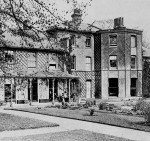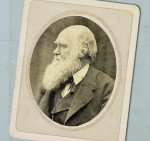Detecting Darwin
Pupils act as Darwin detectives, exploring clues about Darwin's life and work. No prior knowledge assumed.
Each activity builds on the previous one beginning by inferring from photographs and other visual clues and concluding with what is important about Darwin.
Learning outcomes
By the end of the activities pupils will be able to:
- list some key moments in Darwin's life
- describe key ideas about his work and the way that he worked
- sort and prioritise information about Darwin
- describe why he is considered a significant person
Ask The Expert Video
Duration: 8.30 mins
Activity 1: Who Lives Here?
Duration: 15 mins
Activity 2: Piecing Things Together
Duration: 35 mins
Activity 3: Types Of Evidence
Duration: 15 mins
Activity 4: Darwin's Biography
Duration: 30 mins
Discussion questions
Thinking beyond and testing your learning
1. These activities have given you lots of clues to help you piece together events in Darwin's life. How else could we find out more details about a famous person's life?
Suggested answer...
Include: Talking to someone who remembers them, watching a TV programme/ online film, listening to a radio programme, visiting a museum, archive
2. Imagine you have been asked to interview Darwin for an article in a magazine. What would you like to ask him?
Suggested answer...
Prompt with all the different areas of his life that they have learnt about.











